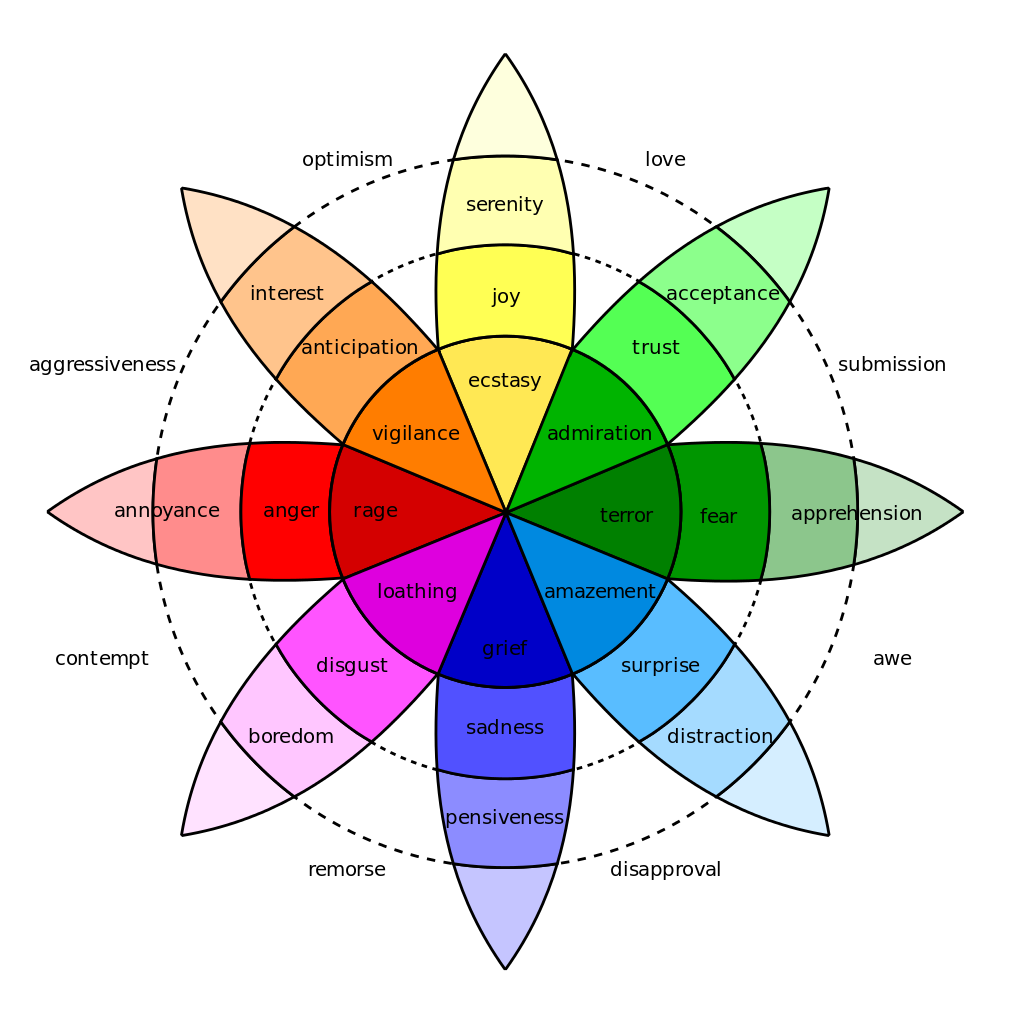The word emotion enters the vocabulary through the French emotion. The etymology of the latter can be traced through Middle and High French to the Latin verb emovere, meaning “to shake, to stir.”
An emotion is a vivid impression, a disturbance of an emotional state of stillness and equilibrium. In the psychological lexicon, “emotion” means an intense affective reaction also accompanied by physical and psychic reactions.
There are numerous theories that attempt to account for the origin of emotions, but all of them can basically be grouped into two macro-schools of thought: one that holds that there are basic emotions common to all and the other that interprets emotions not as biologically determined entities but as social constructions.
To the first school belonged psychologist Robert Plutchik (1927-2006), who in 1980 proposed a modeling of emotions that included eight primary ones and a series of secondary and complex emotions, the result of the varying intensity or combination of the former. The eight primary emotions are, according to Plutchik:
- Fear, feeling of unbearable uncertainty related to expectations of possible future harm;
- Surprise, reaction to the unpredictable;
- Sadness, corresponds to a lowered mood, often needs social support;
- Disgust, feeling of rejection toward someone or something;
- Anger, emotional response to offense, especially if voluntary;
- Expectation, generated due to one’s information and experience;
- Joy, state of well-being and satisfaction, with oneself and around;
- Confidence, feeling and belief that certain situations or actions do not involve harm.

Such a pattern finds graphic representation in a wheel image named the Plutchik flower, which through a system of intersections and colors expresses the combinatorial theory of the American psychologist.
Plutchik’s flower can become a useful tool in narrative research. In fact, emotional analysis can be added to the traces: after the writing activity, people involved in the research can be asked to express the prevailing emotions experienced by referring to Plutchik’s flower. This will make it possible to capture the emotional climate of a particular circumstance and possibly monitor its changes if working diachronically But it will also be possible to more accurately interpret the emotion signals scattered in the narratives collected.
The purpose of the flower, in fact, is to facilitate the identification of emotions through their classification and representation, stimulating understanding of the relationships and interrelationships between different emotional states. Through its use, it is therefore possible to promote empathy and stimulate the ability to manage emotions, while also facilitating relationships and skill.
